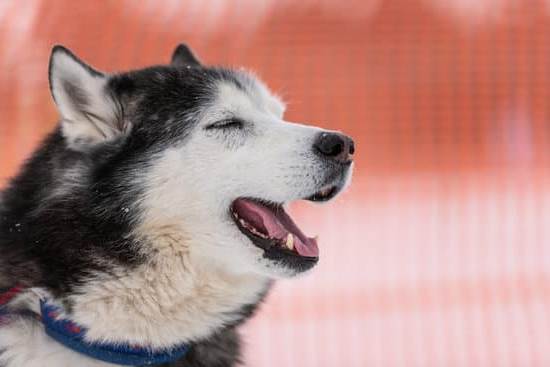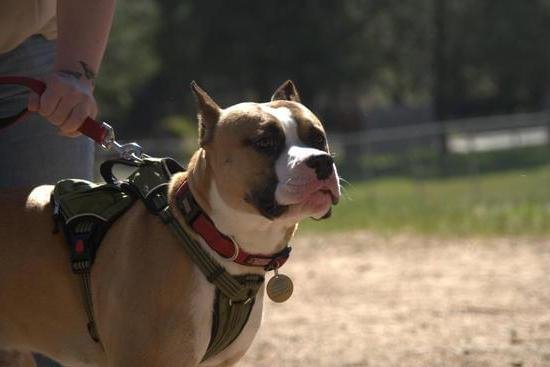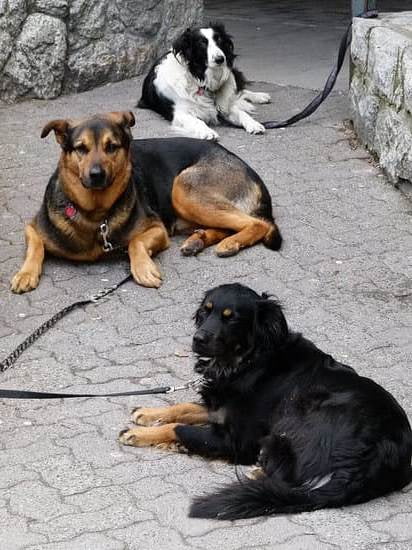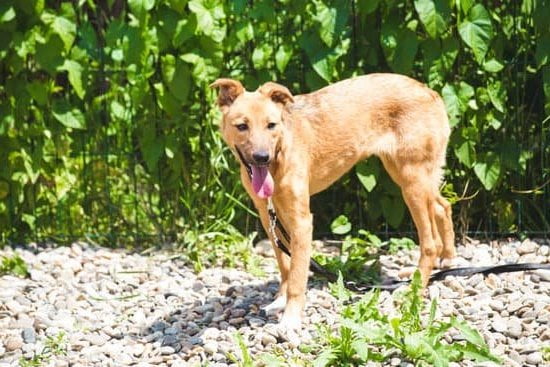Training a dog to live happily and comfortably in an apartment setting can be both rewarding and beneficial for dog owners. Dogs can provide valuable emotional support, companionship, and even encourage physical activity within the confines of an apartment.
Additionally, owning a dog in an apartment complex can foster social interaction with other pet owners, creating a sense of community. This article will guide you through the process of training your dog for apartment living, addressing important considerations such as breed suitability, establishing a training routine, creating a dog-friendly space, teaching essential commands, leash training, mental stimulation activities, and navigating unique challenges that may arise.
Living with a dog in an apartment comes with its advantages. Firstly, dogs are renowned for their unwavering emotional support and companionship. Whether you’re coming home after a long day’s work or spending time alone during the weekends, having a furry friend by your side can be immensely comforting.
Furthermore, dogs require daily exercise which fits seamlessly into life in an apartment. Taking your four-legged companion for walks around the neighborhood or playing interactive games indoors not only benefits their physical well-being but also ensures that you stay active as well.
Another advantage of having a dog in an apartment is the opportunity it provides for social interaction with other pet owners within the complex. Walking your pup opens doors to meet like-minded individuals who share your love for dogs.
It creates opportunities for bonding over common experiences and perhaps even organizing playdates for your furry friends. The presence of other pets can also help to alleviate any feelings of solitude or loneliness that may sometimes come with living in an apartment.
Assessing the Dog’s Breed and Size Suitability for Apartment Living
When considering getting a dog for your apartment, it is crucial to assess the breed and size of the dog to ensure that they are suitable for apartment living. Different breeds have different energy levels and space requirements, so it is important to choose a dog that will be comfortable and content in a smaller living environment.
One key factor to consider when assessing suitability is the energy level of the breed. Some breeds, such as Labrador Retrievers or Border Collies, are known for their high energy levels and require more physical exercise compared to low-energy breeds like Bulldogs or Pugs. In an apartment setting, it may be challenging to provide enough exercise and mental stimulation for certain high-energy breeds, which can lead to behavioral issues stemming from pent-up energy.
Another aspect to consider is the size of the dog. While small and medium-sized dogs generally adapt well to apartment living, larger breeds may struggle with limited space. Large dogs may find it difficult to maneuver around smaller apartments or have enough room to lie down comfortably. Additionally, some apartment complexes may have restrictions on certain large breeds due to their size.
| Breed | Activity Level |
|---|---|
| Border Collie | High |
| Poodle | High |
| Labrador Retriever | High |
| Bulldog | Low |
| Shih Tzu | Low |
| Basset Hound | Low |
It is important to note that every dog is unique, and some individuals within a specific breed may have varying activity levels. However, these examples can provide a general guideline for assessing breed suitability for apartment living.
By carefully considering the breed’s energy level and the size of the dog, you can ensure a more harmonious living arrangement in your apartment. Matching your dog’s needs with your living space will create a comfortable and happy environment for both you and your furry companion.
Establishing a Puppy Training Routine for Apartment Living
Establishing a puppy training routine is crucial for apartment living to ensure that your dog becomes well-behaved and comfortable in their new environment. By following a consistent training schedule, you can help your puppy adapt to life in an apartment and set them up for success in the long run.
Importance of a Consistent Training Schedule
When training your puppy for apartment living, consistency is key. Dogs thrive on routine and predictability, so establishing a consistent training schedule will help them understand what is expected of them and reinforce good behaviors. It’s important to set aside dedicated times each day for potty training, mealtime, exercise, mental stimulation activities, and rest. Stick to the same time slots as much as possible to provide structure and stability for your pup.
Setting Up a Routine
Potty Training
An essential aspect of puppy training is potty training, especially in an apartment setting where outdoor access may be limited. Establish a regular potty routine by taking your puppy outside at the same times every day – ideally after meals, naps, or play sessions. Reward them with treats and praise when they eliminate in the designated spot.
Mealtime
Designate specific meal times for your puppy and stick to a regular feeding schedule. This not only helps with housebreaking but also prevents accidents due to overeating or undereating. Avoid free-feeding and remove any uneaten food after 20 minutes.
Exercise
Providing adequate exercise is crucial for an apartment-living dog’s physical health and well-being. Incorporate daily walks or play sessions into your routine based on your pup’s age, breed type, and energy level. Adequate exercise will also help prevent destructive behaviors due to boredom.
Mental Stimulation Activities
In addition to physical exercise, mental stimulation is crucial for keeping your puppy engaged and avoiding boredom. Include games, puzzles, or training sessions that challenge their brains and teach them new skills. Mental stimulation activities can range from simple obedience training to interactive toys that dispense treats.
By establishing a consistent puppy training routine, you can provide structure, stability, and clear expectations for your dog in an apartment setting. This routine will help your puppy feel more secure, adapt to apartment living more easily, and develop good habits that will benefit both of you in the long run.
Creating a Dog-Friendly Space in an Apartment
Living in an apartment with a dog requires careful consideration of the available space and how to optimize it for both you and your furry friend. By designing a dog-friendly apartment layout and setting up designated areas, you can create a harmonious living environment for both of you.
Tips for Designing a Dog-Friendly Apartment Layout
When it comes to designing your apartment to accommodate your dog’s needs, there are several factors to keep in mind. First, consider the layout of your apartment and identify areas where your dog can have their own space. This could be a corner in the living room or a cozy nook in your bedroom. Having designated spaces not only gives your dog a sense of security but also helps maintain order within your home.
Furthermore, when choosing furniture for your apartment, opt for pet-friendly options that are stain-resistant and durable. Consider getting furniture with removable covers that are easy to clean or investing in protective covers to keep your upholstery safe from fur and dirt.
Utilizing Space-Saving Furniture and Storage Solutions
Living in an apartment often means dealing with limited space – finding creative solutions is key. Look for space-saving furniture options such as collapsible feeding stations or compact beds that can be easily tucked away when not in use. Additionally, utilize vertical space by installing wall-mounted shelves or hooks to store leashes, toys, and other accessories.
Storage is another crucial aspect of creating a dog-friendly apartment. Use under-bed storage containers or clear plastic bins to store extra supplies like food bags, treats, and grooming equipment. This will help keep everything organized while maximizing the available space.
Setting Up a Designated Area for Your Dog’s Necessities
Having a dedicated area for your dog’s necessities ensures that they always know where things are located while also minimizing clutter around your apartment. Set up their bed in a quiet corner of the apartment, away from any drafty areas or high traffic areas. Make sure to place their food and water bowls in an easily accessible spot, preferably near the kitchen.
To keep your dog mentally stimulated, set up a toy basket filled with a variety of toys appropriate for their size and breed. Rotate the toys regularly to prevent boredom and maintain their interest.
By following these tips, you can create a dog-friendly space within your apartment that promotes comfort and helps establish boundaries. Remember that providing structure and designated areas for your dog will contribute to their overall well-being and make apartment living enjoyable for both of you.
Essential Apartment Training Commands for Dogs
Teaching your dog essential training commands is crucial for apartment living. These commands not only help create a well-behaved and obedient canine companion, but they also ensure a peaceful and harmonious living environment for both you and your neighbors. In this section, we will discuss some of the important apartment training commands that every dog should know.
One of the first commands to teach your dog is “sit.” This command is particularly useful when you have guests or are in common areas where you need your dog to stay calm. To teach your dog to sit, hold a treat close to their nose and slowly move it upwards while saying “sit.” As their head follows the treat, their bottom should naturally lower into a sitting position. Once they are seated, praise them and give them the treat.
Another essential command is “stay.” Teaching your dog to stay is important to prevent them from running out the door or getting too close to strangers or other animals in apartment hallways or elevators. Start by having your dog sit in front of you. Place your hand, palm facing outward, in front of their face and say “stay” firmly.
Take a step backward while keeping eye contact with them. If they stay put, reward them with praise or a treat. Gradually increase the distance and duration before giving them the release command.
“Come” is another fundamental command for apartment dogs. Having reliable recall can be lifesaving if your dog accidentally gets off-leash in a public area or starts heading towards an unsafe situation within your apartment complex. To train this command, start by kneeling down with open arms and enthusiastically calling their name followed by “come.”
Reward them with treats or praise when they reach you. It’s important to practice this command in different environments, gradually increasing distractions to ensure that they respond reliably regardless of the situation.
Incorporating positive reinforcement techniques such as treats, praise, and playtime during training sessions is essential. Remember to keep training sessions short, fun, and consistent to prevent your dog from becoming bored or overwhelmed. Consistency in applying these commands throughout your daily interactions with your dog will help reinforce good behavior and make apartment living enjoyable for both of you.
| Command | Description |
|---|---|
| Sit | This command helps your dog stay calm in common areas and around guests. |
| Stay | Teaching your dog to stay is important for their safety and preventing unwanted interactions with others. |
| Come | This command is crucial for recalling your dog in situations where they might be off-leash or heading towards danger. |
Leash Training for Apartment Living
Leash training is an essential aspect of owning a dog, especially when living in an apartment. It not only promotes safety and control but also ensures that walks are enjoyable for both you and your furry friend. In this section, we will discuss the importance of leash training for apartment dwellers, provide tips on teaching your dog to walk calmly on a leash, and offer advice for leash training in a busy apartment complex or city environment.
Firstly, it is crucial to understand why leash training is important in an apartment setting. In a confined space like an apartment complex, having control over your dog while outside is vital to ensure their safety and the comfort of those around you. Leashes help prevent dogs from running into traffic, encountering aggressive animals, or approaching people who may be uncomfortable with dogs.
To teach your dog to walk calmly on a leash, consistency is key. Start by introducing them slowly to wearing their collar or harness and attaching the leash. Allow them to become comfortable with these objects before attempting any actual walking exercises. When they are ready, begin by walking short distances indoors or in a quiet outdoor area where there aren’t many distractions.
During walks, use positive reinforcement techniques such as treats or praise to reward good behavior. Whenever your dog walks politely beside you without pulling or tugging on the leash, give them verbal praise or offer them small treats as rewards. Gradually increase the difficulty of the walks by introducing new environments or gradually exposing them to more distractions.
In a busy apartment complex or city environment, leash training may present additional challenges due to increased foot traffic and potential distractions. One helpful tip is to choose less crowded times of day for walks to minimize potential stress for both you and your dog. Additionally, practicing commands like “sit” or “stay” can help keep your pup focused during encounters with other dogs or humans.
By taking the time to properly leash train your dog, you can ensure a safe and enjoyable walking experience for both of you. Remember to stay patient and consistent throughout the training process. With practice and positive reinforcement, your dog will become well-behaved on the leash, making apartment living much easier and more enjoyable for both of you.
Mental Stimulation and Enrichment Activities for Apartment Dogs
Living in an apartment can present some challenges when it comes to providing enough mental stimulation and enrichment activities for dogs. However, there are numerous exercises and games that can help keep your furry friend mentally engaged and prevent boredom. Here are some ideas to incorporate into your dog’s routine:
- Puzzle Toys: Interactive puzzle toys are a great way to challenge your dog’s problem-solving skills and keep them mentally stimulated. These toys typically require the dog to figure out how to retrieve a treat or toy from inside the puzzle by manipulating certain parts of the toy. Look for puzzles that are recommended for your dog’s size and breed.
- Nose Work: Dogs have an incredible sense of smell, and engaging their nose in activities can be highly stimulating. Hide treats around your apartment for your dog to find, or try scent work games where you hide a particular object with a distinct scent for them to locate.
- Training Games: Incorporating training sessions into your daily routine not only helps reinforce obedience commands but also provides mental stimulation for your dog. Teach them new tricks, such as shake hands or roll over, using positive reinforcement techniques like rewards and praise.
- Playdates: Social interaction is vital for dogs, especially those living in apartments without access to large outdoor spaces. Arrange playdates with other dogs in the apartment complex or take them to a nearby dog park where they can interact with other canines.
- Rotate Toys: To prevent boredom from setting in, rotate your dog’s toys every few days so they always have something new and exciting to play with. This simple action helps keep their interest levels high and ensures they don’t get tired of the same toys.
Remember, mental stimulation should be combined with physical exercise for a well-rounded experience. These activities not only provide much-needed mental enrichment but also strengthen the bond between you and your furry companion. By incorporating these exercises into your routine, you can help ensure that your apartment dog leads a happy and fulfilled life.
Navigating Apartment Living Challenges with a Dog
Living in an apartment with a dog can present its own unique set of challenges. However, with proper training and management, these challenges can be overcome, allowing you and your furry friend to enjoy apartment living to the fullest. In this section, we will explore some common challenges that arise when raising a dog in an apartment and provide tips on how to navigate them effectively.
One challenge that often arises when living in close proximity with neighbors is noise concerns. Dogs naturally bark, but excessive barking can become a nuisance for both you and your neighbors. To address this issue, it is important to train your dog to control their barking through positive reinforcement methods.
Rewarding your dog for quiet behavior and redirecting their attention when they start barking excessively can be effective strategies. Additionally, providing mental stimulation through interactive toys and regular exercise can help reduce boredom-related barking.
Another challenge apartment dwellers face is managing separation anxiety in dogs. Dogs are social animals and may experience distress when left alone for long periods of time in smaller living spaces.
To prevent separation anxiety from occurring or worsening, gradually acclimate your dog to being alone by starting with short periods of time apart and gradually increasing as they become more comfortable. Providing them with a safe space, such as a crate or designated area filled with comforting items like blankets or toys, can also help alleviate anxiety.
Limited outdoor space is another challenge faced by apartment dogs. With little or no backyard available, finding alternative exercise solutions becomes crucial. Look into nearby parks or open spaces where you can take your dog for regular walks or playdates with other dogs. Utilizing indoor exercise options such as puzzle toys or interactive games can also help fulfill their physical needs.
Conclusion
In conclusion, training a dog for apartment living is not only feasible but also highly rewarding. By following the guidelines and tips outlined in this article, apartment dwellers can enjoy the benefits of having a four-legged companion while maintaining a harmonious living environment. It is important to remember that success in training depends on consistency, patience, and positive reinforcement.
Throughout this article, we have discussed the various aspects of training a dog for apartment living. We have explored the importance of considering the breed and size suitability, establishing a puppy training routine, creating a dog-friendly space, teaching essential commands, leash training, providing mental stimulation activities, and navigating common challenges that may arise in an apartment setting.
By applying these strategies and techniques consistently, pet owners can promote good behavior and ensure their dogs are well-adjusted to their living conditions. This includes addressing noise concerns, managing separation anxiety, and finding alternative exercise solutions in limited outdoor spaces.
Embracing apartment life with a well-trained dog not only brings joy to your own life but also enhances your community engagement through social interactions with other pet owners. The companionship and emotional support provided by dogs are invaluable in creating a positive living environment for everyone involved. So start your journey of turning your apartment into a dog-friendly haven today.
Frequently Asked Questions
How do I train my dog to be an apartment dog?
Training a dog to be an apartment dog starts with establishing a routine and setting clear boundaries. Start by creating a designated space for your dog, such as a crate or specific area in your apartment. Teach your dog basic commands like “sit” and “stay” to help them understand and follow your instructions.
Consistency is key when training any dog, so make sure to take them outside frequently for bathroom breaks and exercise. Develop a potty schedule that aligns with their needs, incorporating regular walks or trips to nearby parks. Positive reinforcement, such as treats and praise, will also go a long way in encouraging good behavior and helping your dog adapt smoothly to apartment living.
How long does it take for a dog to adjust to an apartment?
The time it takes for a dog to adjust to an apartment can vary depending on the individual dog’s personality, past experiences, and their owner’s efforts in training and socialization. While some dogs may adapt quickly within a few days or weeks, others may take several months before feeling fully settled in their new environment. Patience is crucial during this transitional period as dogs may experience anxiety or confusion initially.
Providing them with plenty of mental stimulation through toys and interactive games can help keep them occupied while they adjust. Regular exercise and opportunities for socialization with other dogs can aid in improving their comfort level over time.
How to train a dog to pee outside when you live in an apartment?
Training a dog to pee outside when living in an apartment requires consistency, patience, and positive reinforcement. Establishing a specific potty routine is essential for teaching them where it’s appropriate to relieve themselves. Take your dog outside at regular intervals throughout the day, especially after meals or naps, as well as upon waking up in the morning or after long periods of confinement indoors. Choose an area outdoors that you want them to use consistently and bring them directly there each time you go out for potty breaks. Give them verbal cues like “go potty” or “do your business” every time they eliminate outside so they start associating those phrases with the action.
When they do pee or poop outside, offer verbal praise and treats to reinforce that this is the desired behavior. If accidents happen inside, avoid scolding or punishing the dog, as it can create confusion or fear. Instead, clean up accidents thoroughly using an enzymatic cleaner to remove any residual scent that might encourage them to repeat the behavior in the same spot. With time and consistent training, your dog will learn to associate peeing outside with positive reinforcement and understand where it’s appropriate to potty.

Welcome to the blog! I am a professional dog trainer and have been working with dogs for many years. In this blog, I will be discussing various topics related to dog training, including tips, tricks, and advice. I hope you find this information helpful and informative. Thanks for reading!





